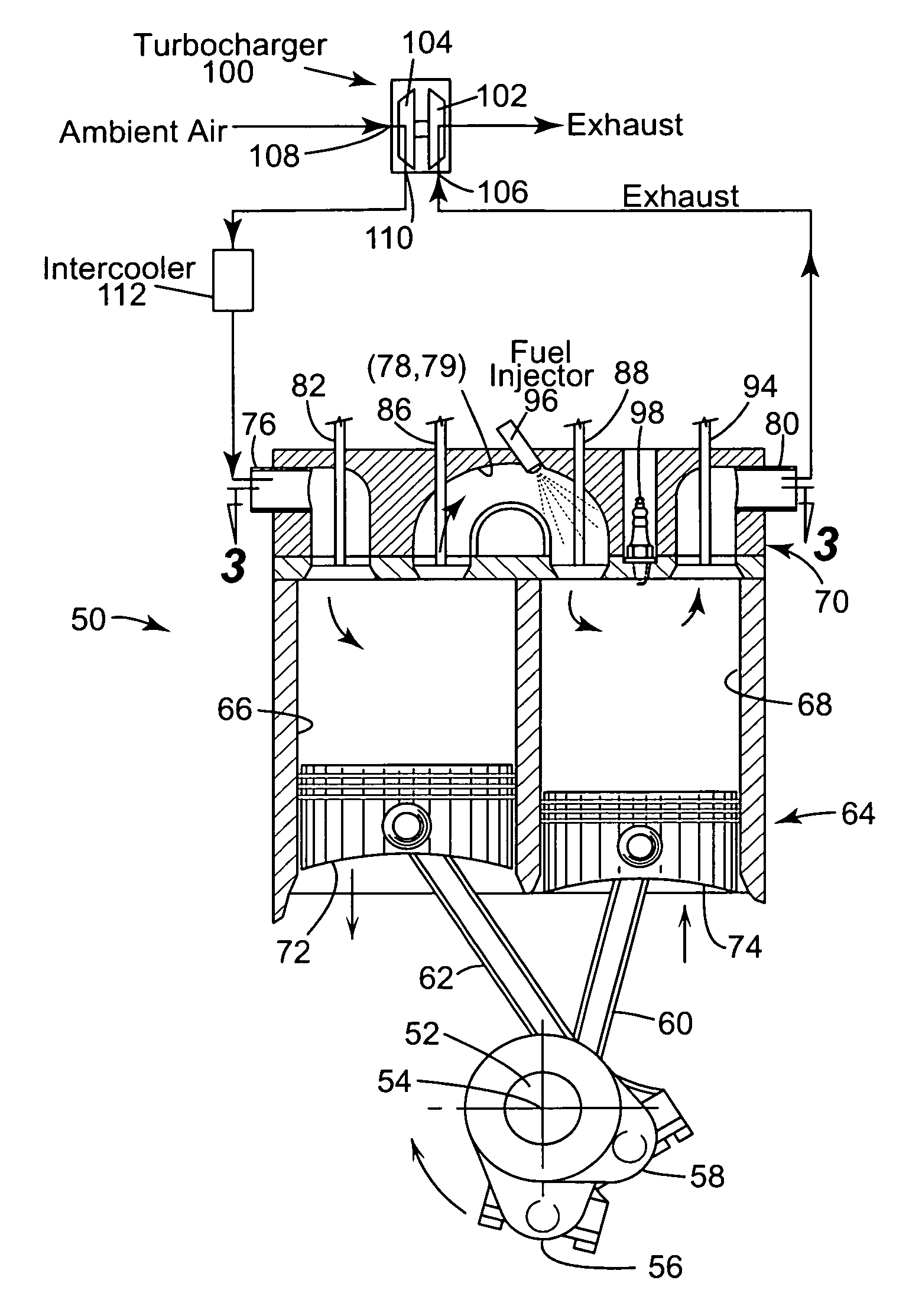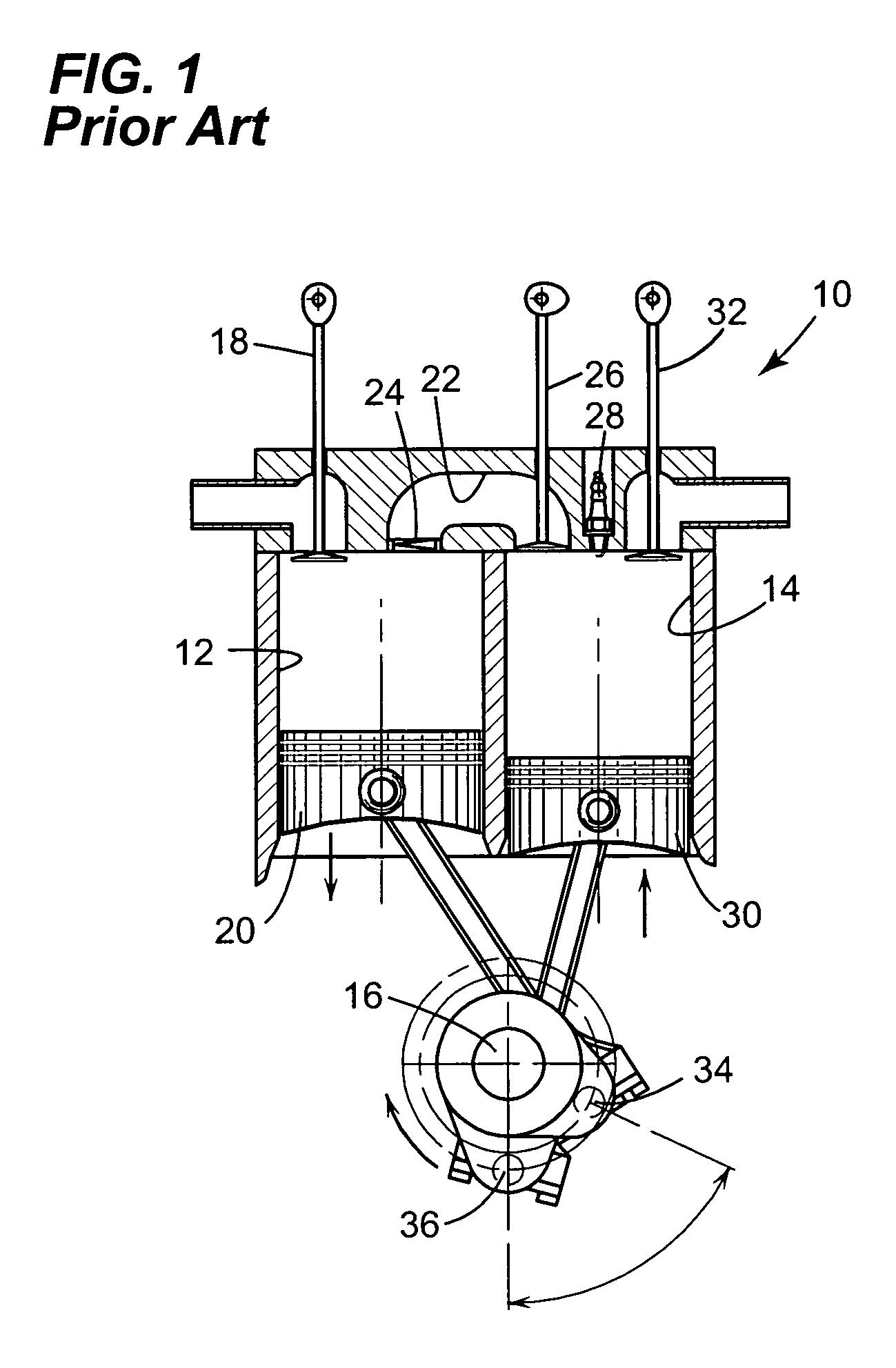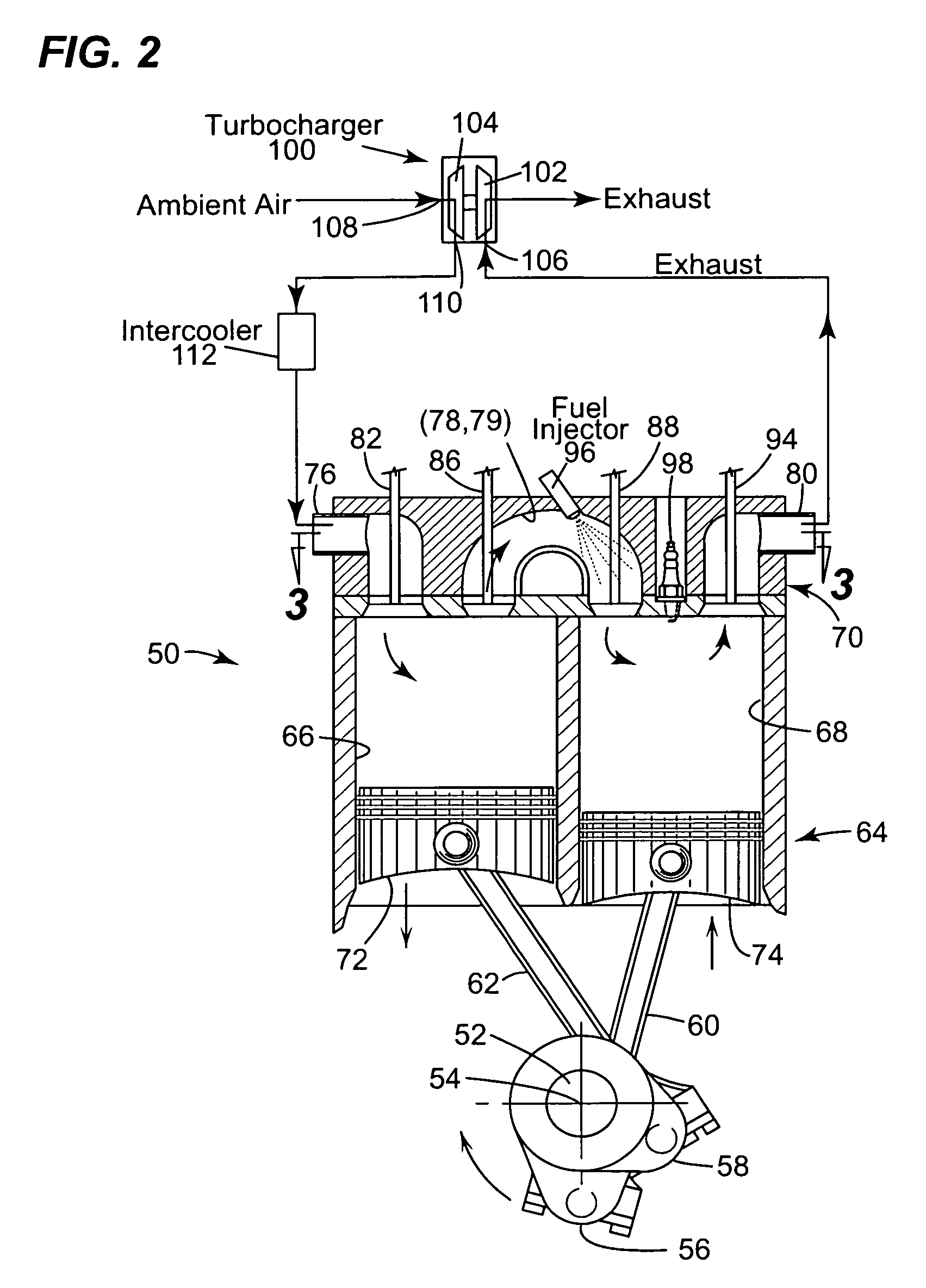Knock resistant split-cycle engine
a split-cycle engine and knock-resistant technology, which is applied in the direction of machines/engines, mechanical equipment, non-mechanical valves, etc., can solve the problems of reducing the power density of split-cycle engines, increasing the size, and limited boost that can be provided to the intake charge of either a conventional or split-cycle gasoline engin
- Summary
- Abstract
- Description
- Claims
- Application Information
AI Technical Summary
Benefits of technology
Problems solved by technology
Method used
Image
Examples
Embodiment Construction
Glossary
[0046]The following glossary of acronyms and definitions of terms used herein is provided for reference:
Air / fuel Ratio: The proportion of air to fuel in the intake charge.
Bottom Dead Center (BDC): The piston's farthest position from the cylinder head, resulting in the largest cylinder volume of the cycle.
Crank Angle (CA): The angle of rotation of the crankshaft.
Critical Pressure Ratio: The ratio of pressures which cause the flow through an orifice to achieve sonic velocity, i.e. Mach 1. It can be calculated from the following equation:
[0047]p0pc=(γ+12)γγ-1
Where:
[0048]pc=critical pressure (at throat)
[0049]p0=upstream pressure
[0050]γ=specific heat ratio.
For dry air at room temperature γ=1.4, so the critical pressure ratio is 1.893.
Compression / Expansion Cylinder Displacement Ratio: The ratio of the displacement of the compression cylinder to the expansion cylinder.
Compression Ratio: The ratio of cylinder volume at BDC to that at TDC.
Cylinder Displacement: The volume that the pi...
PUM
 Login to View More
Login to View More Abstract
Description
Claims
Application Information
 Login to View More
Login to View More - R&D
- Intellectual Property
- Life Sciences
- Materials
- Tech Scout
- Unparalleled Data Quality
- Higher Quality Content
- 60% Fewer Hallucinations
Browse by: Latest US Patents, China's latest patents, Technical Efficacy Thesaurus, Application Domain, Technology Topic, Popular Technical Reports.
© 2025 PatSnap. All rights reserved.Legal|Privacy policy|Modern Slavery Act Transparency Statement|Sitemap|About US| Contact US: help@patsnap.com



